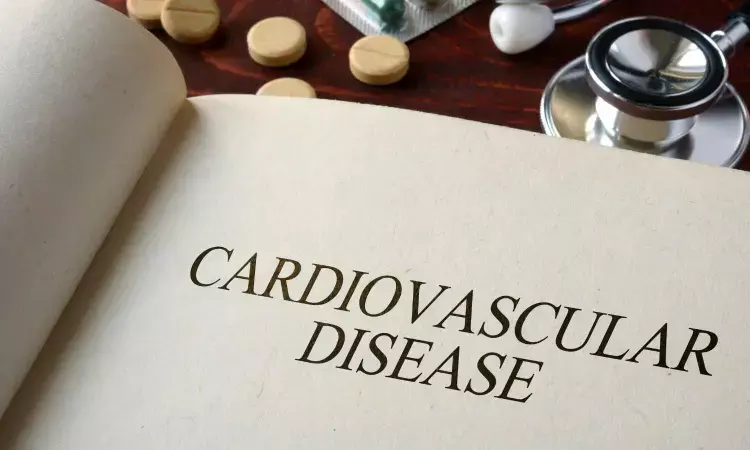- Home
- Medical news & Guidelines
- Anesthesiology
- Cardiology and CTVS
- Critical Care
- Dentistry
- Dermatology
- Diabetes and Endocrinology
- ENT
- Gastroenterology
- Medicine
- Nephrology
- Neurology
- Obstretics-Gynaecology
- Oncology
- Ophthalmology
- Orthopaedics
- Pediatrics-Neonatology
- Psychiatry
- Pulmonology
- Radiology
- Surgery
- Urology
- Laboratory Medicine
- Diet
- Nursing
- Paramedical
- Physiotherapy
- Health news
- Fact Check
- Bone Health Fact Check
- Brain Health Fact Check
- Cancer Related Fact Check
- Child Care Fact Check
- Dental and oral health fact check
- Diabetes and metabolic health fact check
- Diet and Nutrition Fact Check
- Eye and ENT Care Fact Check
- Fitness fact check
- Gut health fact check
- Heart health fact check
- Kidney health fact check
- Medical education fact check
- Men's health fact check
- Respiratory fact check
- Skin and hair care fact check
- Vaccine and Immunization fact check
- Women's health fact check
- AYUSH
- State News
- Andaman and Nicobar Islands
- Andhra Pradesh
- Arunachal Pradesh
- Assam
- Bihar
- Chandigarh
- Chattisgarh
- Dadra and Nagar Haveli
- Daman and Diu
- Delhi
- Goa
- Gujarat
- Haryana
- Himachal Pradesh
- Jammu & Kashmir
- Jharkhand
- Karnataka
- Kerala
- Ladakh
- Lakshadweep
- Madhya Pradesh
- Maharashtra
- Manipur
- Meghalaya
- Mizoram
- Nagaland
- Odisha
- Puducherry
- Punjab
- Rajasthan
- Sikkim
- Tamil Nadu
- Telangana
- Tripura
- Uttar Pradesh
- Uttrakhand
- West Bengal
- Medical Education
- Industry
Serum copper associated with increased risk of cardiovascular disease in men

Spain: Certain trace elements have been linked with an increased cardiovascular (CV) risk. A recent study has revealed a significant association between serum copper (S-Cu) levels and an increased risk of a first event of CVD (cardiovascular disease) in older Spanish men with high CV risk.
The researchers stated that the risk of a first event if CVD was still within the reference values.
"There is a need for further studies to confirm this relationship and to analyse the differences observed between women and men," they wrote in their study published in Nutrition, Metabolism and Cardiovascular Diseases.
Ischemic heart disease and stroke are reported to be the first and second leading causes of death in people over 50 years of age, and there has been a worldwide increase in the burden of disease attributed to cardiovascular pathology. Therefore, it is appropriate to identify new modifiable risk factors that can improve the effectiveness of primary prevention measures for CVD. There has been an increase in interest in the effect of different trace elements, metals, and minerals on CVD.
Although the body's requirement for copper is lower than other metals, minerals, and trace elements, it is still crucial for many biological functions. However, a disorder of copper metabolism can contribute to the development of different pathologies, such as cancer, CVD, and neurodegenerative disease.
The study was conducted as a case-control study nested within the PREDIMED trial by Carlos Muñoz-Bravo, University of Málaga, Málaga, Spain, and colleagues. They aimed to evaluate the association between serum copper levels and the risk of the first event of CVD in a population of older adults with high cardiovascular risk.
A total of 207 incident cases diagnosed with cardiovascular disease were matched for age, sex and intervention group with 436 controls, during a median follow-up of 4.8 years. Known CVD risk factors were assessed using validated questionnaires, reviews of medical records, and personal interviews.
An annual collection was made of biological serum samples. Serum copper was determined using inductively coupled plasma mass spectrometry analysis. Adjusted odds ratios were determined using multivariate conditional logistic regression models.
The authors reported the following findings:
- All participants had S-Cu levels within the reference values, 750 μg/L to 1450 μg/L.
- Among men, but not among women, the mean S-Cu concentration was higher in cases at 1014.1 μg/L than in controls at 959.3 μg/L.
- In men, the multivariable-adjusted odds ratio for CVD was 2.36, in women, it was 0.43.
- An inverse association was observed between fruit and fish consumption and serum copper levels.
"We found an association between serum copper and an increased risk of cardiovascular disease in men," the researchers wrote.
"Our findings suggest a sex difference in cardiovascular disease risk and S-Cu levels. To confirm this relationship and to analyse the differences observed between men and women, there is a need for further studies," they concluded.
Reference:
Muñoz-Bravo C, Olmedo P, Gil F, Ruiz-Canela M, Martínez-González MA, Martínez MÁ, Babio N, Fitó M, del Val JL, Corella D, Sorlí JV, Ros E, Fiol M, Estruch R, Santos-Lozano JM, Arós F, Serra-Majem L, Pintó X, Gómez-Gracia E, Gutiérrez-Bedmar M, Association between serum copper levels and risk of cardiovascular disease: a nested case-control study in the PREDIMED trial, Nutrition, Metabolism and Cardiovascular Diseases, https://doi.org/10.1016/j.numecd.2023.07.008.
Dr Kamal Kant Kohli-MBBS, DTCD- a chest specialist with more than 30 years of practice and a flair for writing clinical articles, Dr Kamal Kant Kohli joined Medical Dialogues as a Chief Editor of Medical News. Besides writing articles, as an editor, he proofreads and verifies all the medical content published on Medical Dialogues including those coming from journals, studies,medical conferences,guidelines etc. Email: drkohli@medicaldialogues.in. Contact no. 011-43720751


